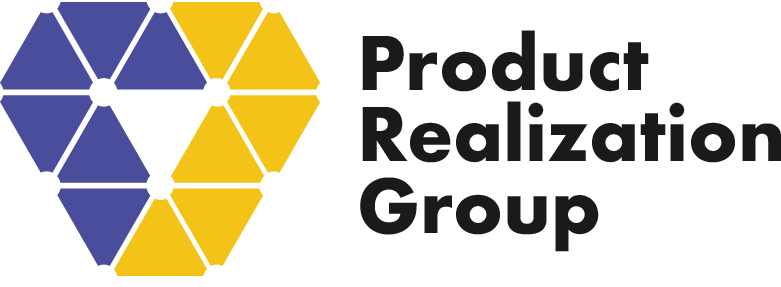
A Discussion with Ken Kapur
Join us for a conversation between Michael Keer, Founder and Managing Partner of Product Realization group, and Ken Kapur, an expert in product compliance, about overcoming the biggest barriers to new product development and introduction: time and money. This interview has been edited for length and clarity.

Ken Kapur is the Director of Global Product Compliance at Thermo Fisher Scientific. An expert in regulatory compliance, Kapur has proactively worked with product regulations for over 30 years. Starting in Product Safety, Kapur’s career experience includes a number of senior management and technical roles related to Regulatory Compliance, Legal, Quality, EHS, Manufacturing Operations and R&D, working with a wide range of standards and regulations.
Kapur has a Bachelor Science degree in Electrical Engineering from the University of the Pacific. He has been very involved in IEEE, he is a Senior IEEE Member and is also on the Board of Governors for the Product Safety Engineering Society. Kapur has been invited to speak at a number of international forums on topics related to Product Safety, Regulatory Compliance, Environmental Compliance and Design for Compliance.
To kick things off, reflecting on your hardware product realization journeys from concept to scale, what do you see as the most pivotal challenges, especially considering their impact on product launches?
Releasing new products and innovative technology is crucial for business and also to meet revenue goals. But, when it comes to challenges, what I’ve noticed is that the people I work with often grapple with the idea that there are a lot of specifications, requirements, and details that need to be addressed. The challenge essentially boils down to limited resources.
There’s a shortage of resources, not enough people to tackle all the problems and handle each specification and all the applicable requirements. Bringing all the required experts together has been a significant challenge in every New Product Introduction for every new product that I have seen.
So, resources are a big deal, and they’re closely tied to timing. To add to that, it’s the shortage of people to handle all the specs and the constraint of time, right? Those are the two major areas that consistently come up in nearly every project when dealing with product realization.
Why does this pattern persist? Where’s the gap when it comes to, let’s say, hiring a large group or allocating more money and time?
It requires an investment, but both dollars and time are limited. It’s not as simple as just having a surplus of experts ready to go. So, that’s a challenge that keeps recurring. And yes, it happens repeatedly. What this suggests is that smart business leaders understand how to be efficient, scale up quickly, and ask the right questions to gather the necessary information for product development.
Certainly, new products are emerging daily. Are they perfect? Probably not.
Do they meet business requirements and generate revenue? Yes. There’s always room for improvement, though.
One more point to add is, given your experience in both big and small companies, do you notice different challenges between them? Particularly in terms of resources and people?
Indeed, there’s a distinction. Larger companies have more resources and more experienced people, but these resources are often occupied with other projects. It becomes a matter of persuading managers, seeking assistance, and being appreciative of those who go beyond their regular duties to help out on a new project.. Smart business leaders can navigate this effectively in an organization.
On the other hand, smaller companies face a different scenario. They might not be fully aware of what they don’t know. While they are focused on getting new technology or products to work, the lack of readily available resources and experts poses significant challenges. Smaller startups and their leaders encounter surprises along the way, realizing aspects they were unaware of, which distinguishes them from larger companies.
Can you share some strategies or modifications you’ve used to address issues of time, money, and people?
Certainly, planning is crucial. We commonly refer to the “A3” for our plans and projects. The A3 Problem Solving methodology originated from Toyota and is essentially a project plan, detailing resources, budget, milestones, and timing. This A3 formatted project plan is documented on a single A3 Page and the elements are pivotal. When reviewing our projects, we focus on goals, concepts, technology innovation, and market opportunities outlined in the plan.
As you navigate the A3 plan, involving people, resources, R&D, and development, stumbling blocks will inevitably arise. It’s all about how you handle these obstacles. Identifying and assessing risks, whether they’re business, technological, or supplier-related, is crucial. We actively manage these risks through each project phase until we reach the point of finalizing the project.
Effective planning is undeniably critical. Ken, would you agree that having a formal phase gate process is one of the critical factors for success?
Absolutely. A successful phase gate process must be understood by the team in advance, providing clarity on what we’re going to do and how we plan for project milestones.
Whether for small or large companies, the process differs, especially considering the product’s design, development, and release. For instance, a smaller company with a more dedicated product and defined specifications should establish a clear and, hopefully, standardized phase gate process. This eliminates the need to reinvent the process each time. Once the process is developed, the team can follow the steps, progressing through each phase accordingly.
Alright, let’s shift focus to this follow-up question about what to do when you encounter a surprise.
It’s a really good question, and a lot depends on the nature of the surprise—whether it’s related to hardware, software, regulatory issues, or suppliers. You may find yourself facing something unplanned, unanticipated. For example, let’s consider a scenario where you make assumptions about developing new technology but it is based on a critical supplier’s commitment. They promise to deliver parts or components by the end of the month but when the deadline approaches you discover supplier delays. The supplier apologizes, citing problems like sub-supplier issues so they couldn’t produce what you needed in time.
So, how do you handle such situations? I believe you must be ready to pivot and reprioritize your time.
Clear your calendar, set aside regular meetings, and focus on addressing the gap and the key problem at hand. In some cases, it might involve meeting the supplier face-to-face, as virtual calls may not suffice. Perhaps you need to hop on a plane to visit the supplier and personally understand the situation and work to resolve the issue. After addressing the immediate concern, you return to the planning stage to reassess your plans, resources, timing, and personnel.
I often encounter situations where the problem boils down to a resource issue. In such cases, we consider bringing in temporary staff, contractors, consultants or external experts to bridge the gap. If facing a potential six-month setback due to a surprise, bringing in an outside expert can often help address the gap, solve the problem, and get the project back on track.
Were there aspects of the book Agile Hardware Product Realization: Mastering the Journey from Concept to Scale that resonated with you, sparked your interest, or reminded you of impacts or experiences in your journey?
I really appreciate Michael for compiling the book and documenting many years of experience.
Regarding the book’s message and getting through the logical aspects, it all makes sense. These are areas not typically taught in engineering school, so you have to figure them out. My perspective is that if you don’t follow the processes outlined in the book, it often leads to failures, problems, and unexpected outcomes. One example could be a delayed release. The book provides valuable insights into planning and preparation to keep a project on schedule.
As discussed in the book, many projects face delays for various reasons, and these delays can have financial impacts, affecting investments, salaries, and revenue projections. Another issue, especially in compliance, product safety, or certification, is when you’ve done everything to design a product based on available information, release it, and then you encounter issues in the field. This could be a failure, a product not working as expected, or a safety/compliance/certification problem. Going back to redesign is painful but can be avoided with early planning with the right experts.
The book serves as a reminder of why early planning is crucial and provides practical insights. Implementing these practices is challenging, but it’s necessary to avoid frequent redesigns, which can be costly and challenging for teams. The sections on schedule delays and redesign are two significant outcomes to watch for, and the book provides valuable reminders to track them.
I also appreciate your inputs on the regulatory section, and to the best of my ability, I incorporated them into that part. To wrap up, are there things you wish you had known as an early-career hardware professional?
Absolutely, everything in the book feels like essential knowledge, akin to starting a job on a development or R&D team. It’s almost a prerequisite. Knowing the basics is crucial because diving into product development without this foundational understanding leads to numerous obstacles and challenges. Many new engineers find themselves saying, “Why didn’t anyone tell me?” Even with a bachelor’s, master’s, or PhD, engineering schools often miss highlighting the practical aspects of developing and releasing a new product. MBA schools don’t really cover it either. Much of this knowledge comes from on-the-job training.
So, Michael, we appreciate you for putting this into the book. It’s essential to keep emphasizing and promoting it. There’s definite value, and it serves as a powerful reminder. The key is to keep spreading the message, conducting marketing efforts, and getting this valuable information to the right people at the right time—particularly early in their careers and at the beginning of a project.
—
If you enjoyed this blog, then read our interview with James Blackwell, CTO and Co-founder of Roost Inc., that sheds light on two significant hurdles that impact product launches: the complex process of plastic design and tooling and the critical importance of identifying the right manufacturing partner.
Have you ordered your copy of the book Agile Hardware Product Realization? If not, get yours on Amazon today. Or check out these resources from the experts at Product Realization Group:
- The 10 Best Practices of Agile Hardware Product Realization delivers a concise guide and convenient reference.
- Gauge the readiness of your product hardware launch to scale. Take our 3-minute rapid assessment and get instant feedback. Or complete an in-depth comprehensive assessment and receive a complimentary personalized report.


